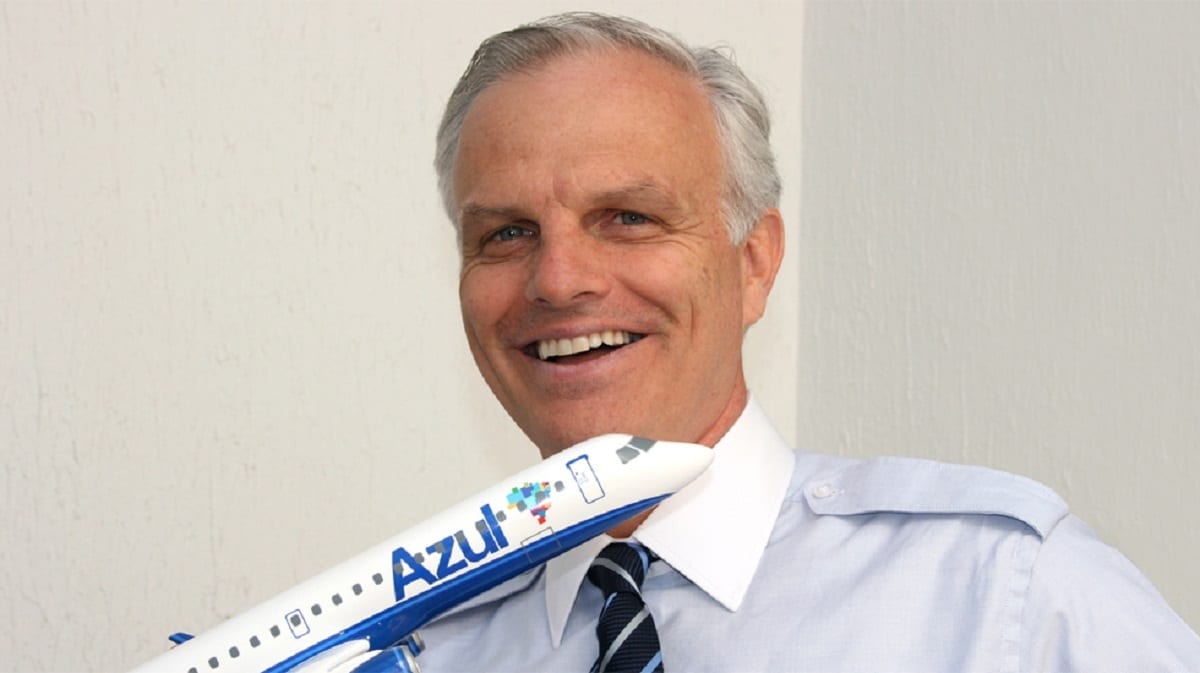RIO DE JANEIRO, BRAZIL – The euphoria of investors with a potential attempt by Azul to buy LATAM’s Brazil operation, which is under a Chapter 11 bankruptcy reorganization plan, is not backed by analysts specialized in the large financial institution’s sector.
There is skepticism about both the business’s chances of success and Azul’s financial capacity to live up to this combination. The main factor undermining the experts’ confidence is the debt of the company founded by David Neeleman, with its extra R$15 (US$2.8) billion, which is “off” the balance sheet.

“The company has not yet signed up for its own home and is announcing that it is going to buy a country farm,” commented an analyst. The company founded by David Neeleman, when it presented its quarterly balance sheet, reported a debt of R$14.1 billion for aircraft leasing at the end of March. However, the balance to be effectively disbursed is R$29.5 billion. This is the extent of payments the company will actually have to address.
Where are these more than R$15.4 billion, then, if not in the financial statements? In the explanatory notes – that is, in the fine print of the quarterly information. When the new international accounting rule (the IFRS 16) introduced airplane leasing into the airlines’ results, it allowed the discount rate used to record the present value commitments to adjust for adverse scenarios. Nothing more adverse than a pandemic.
Well, then. In the first quarter of 2020, Azul discounted its aircraft lease balance at 8%. With the onset of the pandemic, this percentage rose to almost 22%. However, this rate has no cash effect. The company remains committed to the full amount.
From January to March, Azul’s net revenue fell almost 35% year-on-year, to R$1.8 billion, and EBITDA dropped by slightly over 80%, to R$130 million. Losses increased more than 15% and exceeded R$1.1 billion.
According to analysts, at the time of the rate change, the company stated that it applied to its leases the same “discount” that its debt bonds were suffering in the market. “But now the bonds are being negotiated at much more reasonable prices,” comments one of the three experts.
What most worries investors are that rival Gol raised this rate from 8.6% to 12.1%. Therefore, in the case of the airline controlled by the Constantino family, the present amount of leasing agreements stands at R$8.5 billion, and the total, with no discount, is R$11.8 billion. “Why does one use 12% and the other 22%? I don’t think this difference makes sense,” says one of the experts, noting that the higher the rate, the higher the debt value that “comes off the balance sheet.”
In their renegotiations of leasing contracts due to the pandemic, Gol and LATAM chose to make an agreement in which they pay the leases of most of the aircraft by hours flown at this most critical moment, in an attempt to adjust the cost to the low rate activity. Azul transferred the disbursements to the future. As a result, in 2023 and 2024, it has almost R$4 billion to pay each year.
Will it work?
Morgan Stanley analysts said in a report on Thursday, May 27, that the bullish reaction of shares – both Azul and Gol’s (with activity recovery data) – “seem excessive.” In the case of Azul, Josh Milberg and Jorge Lourenção point out that it will be “challenging” for Neeleman’s company in Brazil to meet the projection of a “minimum” EBITDA of R$4 billion for 2022, which he presented to the market.
According to them, for this figure to be possible, domestic air traffic will need to grow by 20% compared to 2019, and international traffic must remain at least stable in this comparison. This is because 25% of Azul’s capacity consists of international flights and because about 50% of its revenues depended on corporate travel before the pandemic.
Thus, analysts estimate that the projection will be difficult to achieve and that current stock market prices seem high. Experts believe that both Azul and Gol are either well valued or even overvalued, and therefore expensive. Yesterday, May 27, Gol was worth close to R$10 billion and Azul, R$15 billion in market value.
An asset manager analyst points out that, according to his calculations, Azul will face a cash generation deficit ranging from R$2 to R$2.5 billion per year between 2022 and 2024, in order to meet its commitments, which range from the leasing of aircraft to the interest on its financial debt.
More bumps in the road
Another obstacle that discourages analysts about a potential merger is Brazil’s antitrust agency: the Administrative Council for Economic Defense (CADE). Although the companies may claim that the overlap is irrelevant, Azul and LATAM together would have a 60% market-share in Brazil. None of the experts heard believes that the agency would allow such concentration.
Finally, it’s worth noting that everyone feels that the climate of hostility between the companies right from the start will hinder an agreement, although Neeleman’s airline may try to work together with LATAM’s creditors.
Sources close to creditors see Azul’s interest as positive. However, there is concern that a transaction would solve only the commitments related to aircraft for domestic use – since it is believed that Azul is only interested in ex-TAM – and leave out one of LATAM’s biggest problems, large aircraft.
There are some common creditors between the companies, such as the Oaktree fund of legendary Howard Marks, which will always see a favorable wind. For them, a potential combination solves, even if only for a short break to ensure their withdrawal from the investment, two of their bets in the sector.
Only time will tell. But, industry analysts believe that investors who have been buying the sector’s shares on the stock market, especially with this bet on Azul’s consolidation and at current prices, are flying blind.
Source: exame

